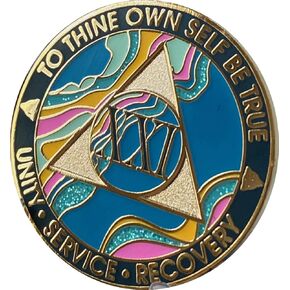- التسوق ، جعل بسهولة.
- /
- احصل على التطبيق!
The epic tale of mapping the globe
As seen on PBS
"Explores the history of mapmaking with elegance and intelligence" --The New York Times
How do we see the world? Some ancients believed it rode on the back of a turtle. The Greeks viewed it as a sphere and measured it with astonishing accuracy. Today, scientists monitor it from space, detecting complex climate patterns that threaten our survival.
Narrated by Patrick Stewart (X-Men, Star Trek: The Next Generation), this fascinating six-part series traces the history of mapmaking from crude clay tablets to sophisticated electronic screens. Internationally respected historians, NASA scientists, and other experts explain how humans rely on imagination, observation, and mathematics to create pictures that make sense of our world. Throughout history, maps have served as symbols of wealth and power, tools of conquest and subjugation, and instruments for saving lives. They once held information worth killing for, and now they offer clues that might avert global destruction.
Award-winning actor Patrick Stewart narrates this acclaimed series, produced in consultation with the British Library and Royal Geographical Society--the world's largest scholarly organization dedicated to the science of geography.
SPECIAL FEATURES
20-page viewer's guide includes highlights, questions to consider, avenues for further learning, "Tools of the Mapmaker's Trade," "The Math Behind a Map," and "Myths on Maps."
"The Chartbusters": pioneers in cartography
Text interview with Patrick Stewart
Biographies of Stewart and series editor Simon Berthon
Exclusive web extras
Shown on PBS when the series was first released, The Shape of the World has until now only had limited availability through VHS. Now readily available on DVD, these six 50-minute episodes will, for those of us for whom world geography is a foggy haze, serve as a welcome crash course. Why do maps matter and what are their political implications? While this topic may sound dry, The Shape of the World is ultimately fascinating, especially as narrated by Patrick Stewart of Star Trek fame. Produced in consultation with the British Library and the Royal Geographical Society, the series functions like a college course: episodes are broken up chronologically and thematically and there's even a 20-page supplementary booklet that asks pertinent questions about each show. All in all, it reminds one just how arbitrary and subjective drawing up a map can be.
Episode One, "Heaven and Earth," starts the series off on a lofty cosmological note, detailing beliefs in Egypt, China, ancient Greece, and Europe regarding the shape of the planet and how Earth was formed. Opening with scenes set at a map-reading ceremony on the island of Java, the episode covers both indigenous cultural views and Western philosophy with adept acuity. Philosophers and museum curators show works of art that encapsulate past beliefs, and the subject matter is far-reaching. Where did Ptolemy's accurate maps disappear to during the Middle Ages? And how does the history of silk production factor into influencing worldviews about a round earth versus a flat one? Each ensuing episode follows similarly. Episodes three and four, "Staking a Claim" and "Empire!" survey naval exploration of the Americas and the French, English, and Dutch colonization of countries such as India and Australia to illustrate how the New World was mapped out based on a few men's opinions. Native Americans and Indian scholars alike are interviewed on historical topics, and for these reasons the show feels round, as if it's offering a holistic view in efforts to create a more accurate map of public opinion. One of the best parts about the series is that important maps are discussed politically, economically, and artistically.
Episode six, "The Writing on the Screen," shows us what in 1990 was a new technology invented for ambulances: GPS driving systems. Though this and other later episodes feature dated computer technology, it is interesting to meditate on our advances and to consider what purposes inventions were originally meant to serve versus what they are presently used for. --Trinie Dalton
 الصف الثاني - مصنفات تعليمية للمبتدئين في الصباح
KWD 4.500
الصف الثاني - مصنفات تعليمية للمبتدئين في الصباح
KWD 4.500
 21 سنة ميدالية ميدالية أنيقة الرخام تاهيتي تيل تيل الأزرق والوردي ملموسة الذهب المطلي
KWD 8
21 سنة ميدالية ميدالية أنيقة الرخام تاهيتي تيل تيل الأزرق والوردي ملموسة الذهب المطلي
KWD 8
 مجموعة اللوازم المدرسية للأطفال ميني ماوس من ديزني مع مقلمة ودفتر ملاحظات ومجلدات وأقلام رصاص - 11 قطعة. تعيين
KWD 5.500
مجموعة اللوازم المدرسية للأطفال ميني ماوس من ديزني مع مقلمة ودفتر ملاحظات ومجلدات وأقلام رصاص - 11 قطعة. تعيين
KWD 5.500
 مقعد ECR4Kids للتخزين المتذبذب، ارتفاع المقعد 15 بوصة، مقاعد نشطة، أزرق/رمادي فاتح
KWD 29.500
مقعد ECR4Kids للتخزين المتذبذب، ارتفاع المقعد 15 بوصة، مقاعد نشطة، أزرق/رمادي فاتح
KWD 29.500